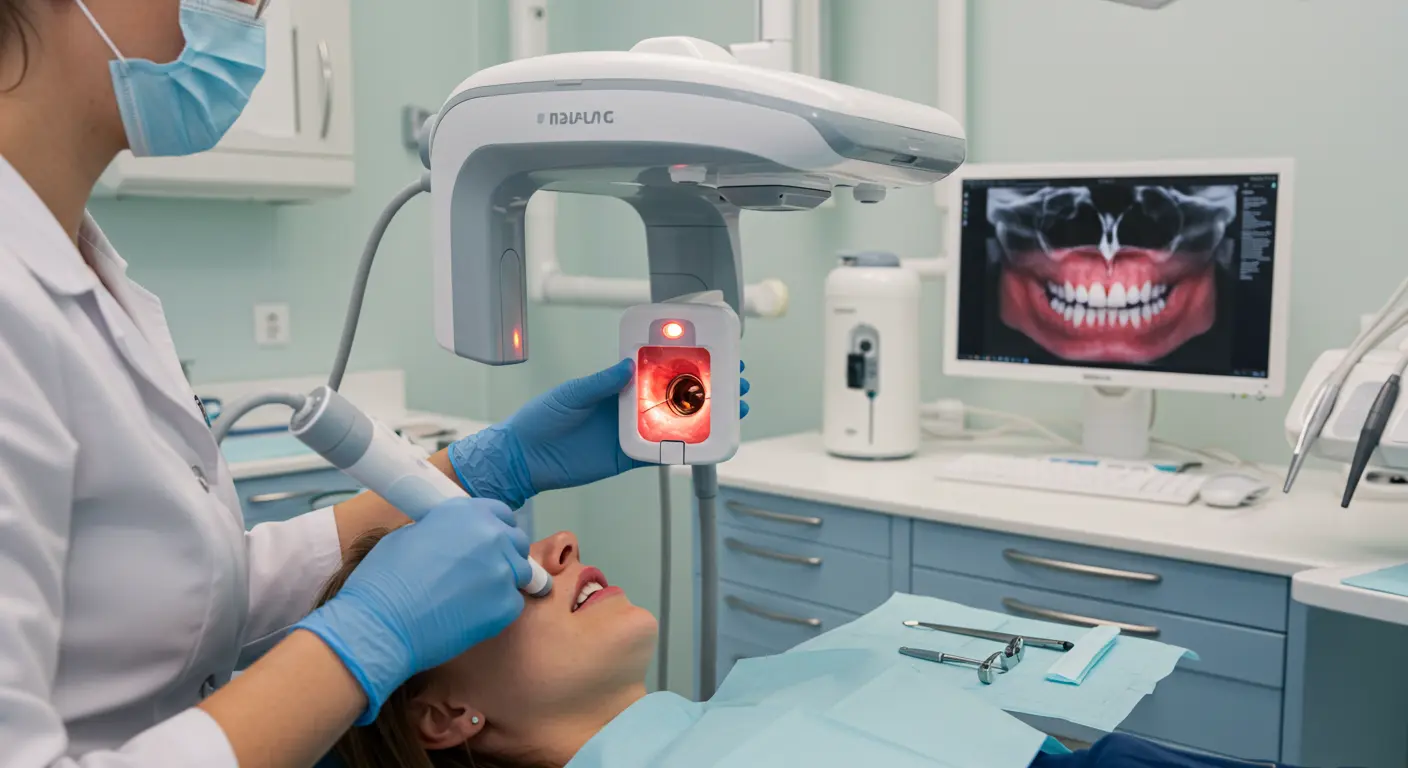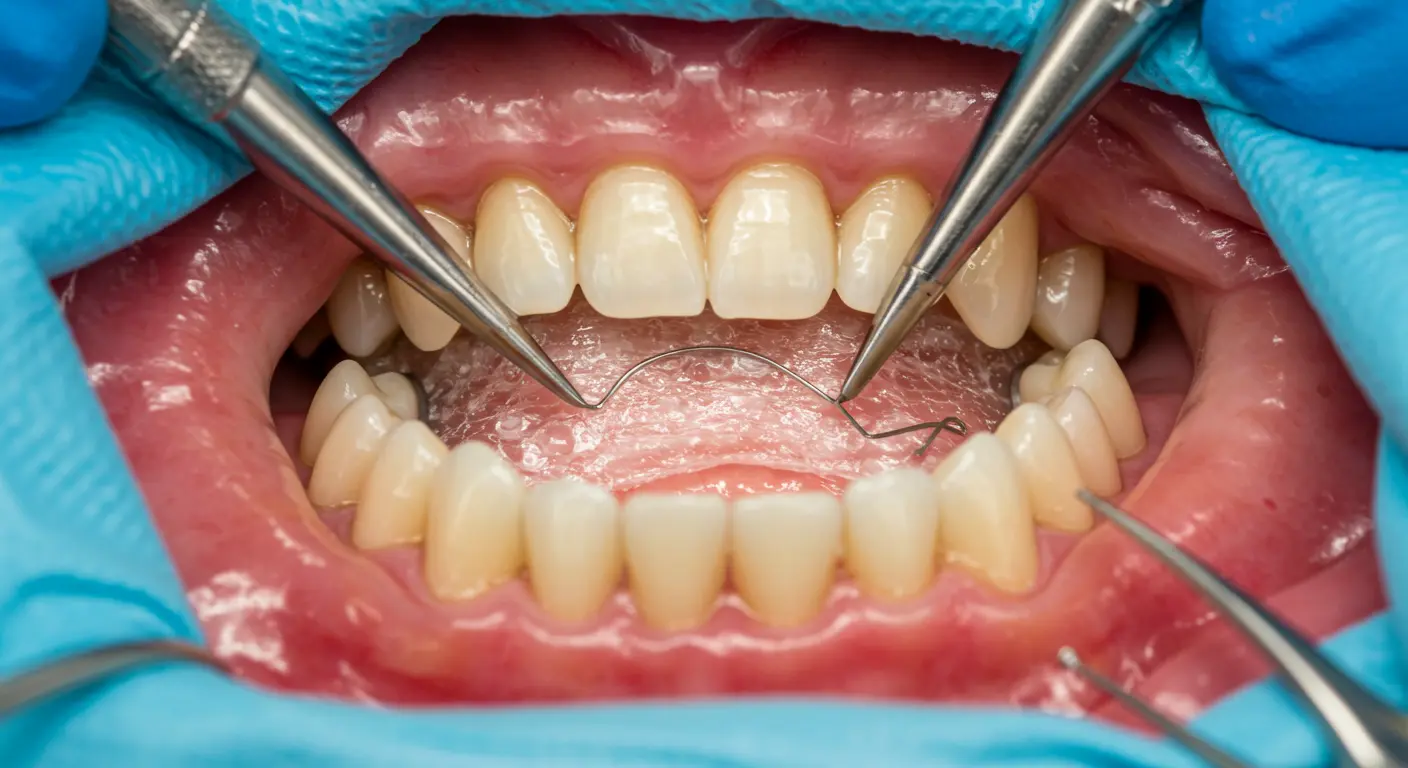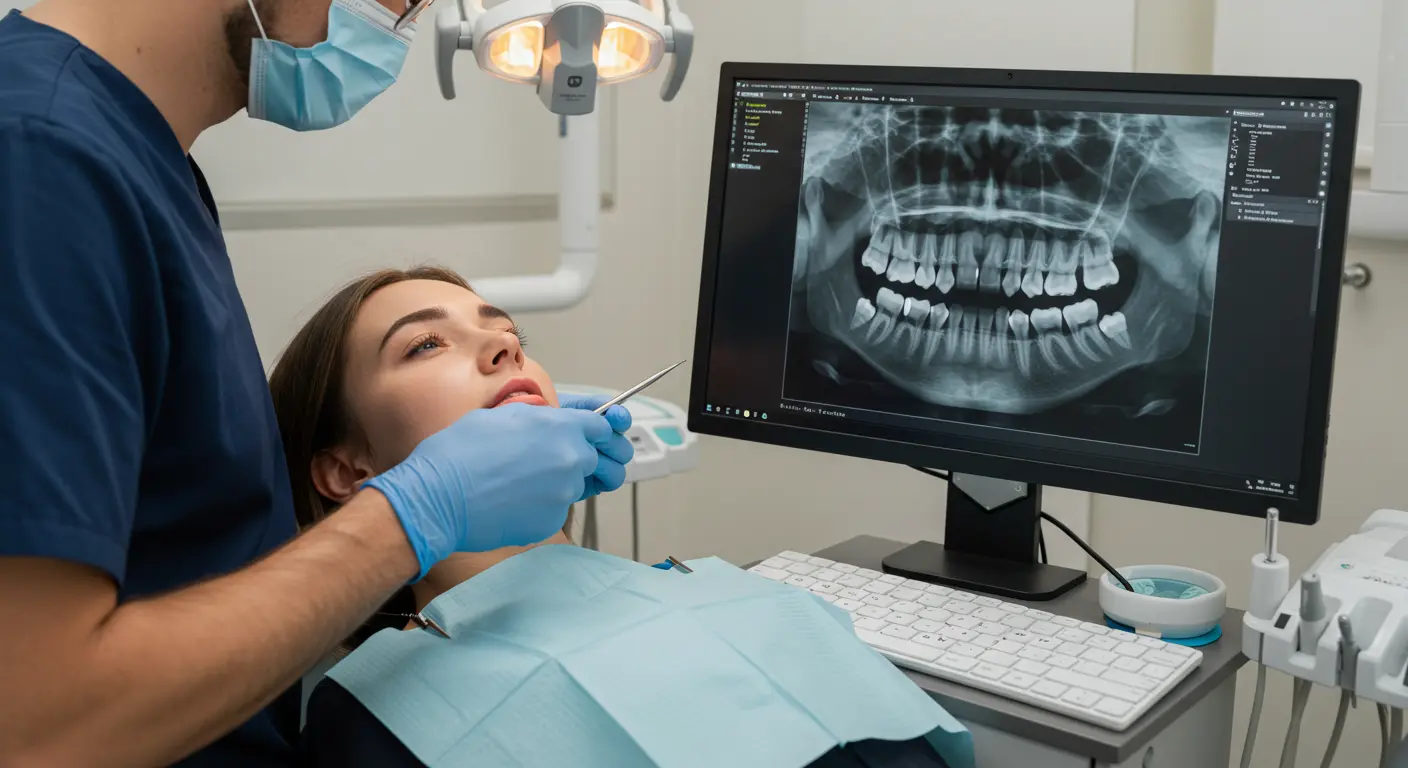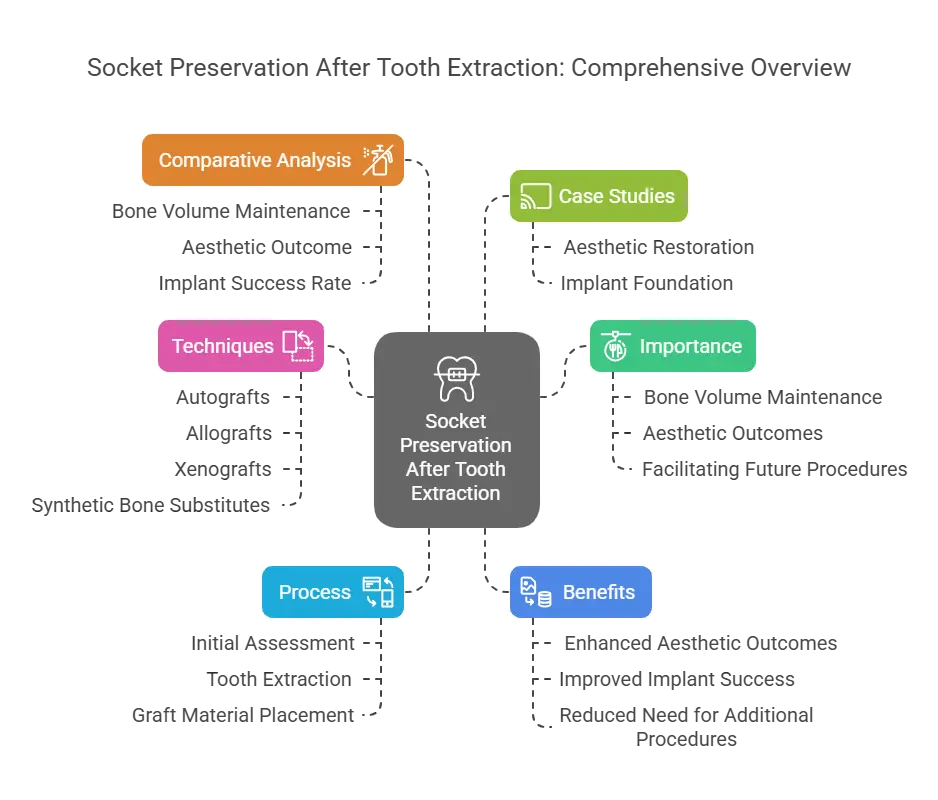Socket Preservation After Tooth Extraction: Ensuring Long-Term Oral Health and Aesthetic Outcomes
Socket preservation after tooth extraction is a critical procedure in modern dentistry designed to maintain the integrity of the alveolar ridge following tooth removal. When a tooth is extracted, the surrounding bone and gum tissue can begin to resorb, potentially compromising the foundation for future restorations such as dental implants. This article provides an in-depth, step-by-step guide to socket preservation after tooth extraction, highlighting its importance, procedures, benefits, and future trends. By understanding these concepts, patients and dental professionals alike can make informed decisions that support long-term oral health and aesthetic outcomes.

Understanding Socket Preservation After Tooth Extraction
Socket preservation after tooth extraction refers to a set of techniques aimed at maintaining the bone volume and soft tissue contours in the socket immediately following the removal of a tooth. This procedure is designed to prevent alveolar ridge resorption—a natural but undesirable consequence of tooth extraction that can hinder subsequent restorative procedures.
Key Concepts:
- Alveolar Ridge Preservation: The process of maintaining the height and width of the jawbone.
- Socket Grafting: The placement of grafting material into the extraction socket to stimulate bone regeneration.
- Bone Resorption Prevention: Preventing the loss of bone volume that typically occurs after tooth extraction.
These techniques are vital, especially when planning for future dental implants or other prosthetic restorations.
Why Socket Preservation Is Crucial
When a tooth is extracted, the empty socket undergoes a healing process that often results in bone loss. This resorption can significantly impact both the function and aesthetics of dental restorations. Socket preservation after tooth extraction plays a pivotal role in:
- Maintaining Bone Volume: Preserving the alveolar ridge provides a stable foundation for implants.
- Enhancing Aesthetic Outcomes: Prevents facial sagging and ensures a natural contour for future restorations.
- Facilitating Future Procedures: A well-preserved socket is essential for successful implant placement and other restorative treatments.
- Reducing Overall Treatment Time: By minimizing bone loss, additional grafting procedures may be avoided.
The importance of this procedure cannot be overstated, particularly for patients planning dental implants or those concerned with maintaining facial aesthetics.
Techniques and Materials Used in Socket Preservation
A. Autografts, Allografts, and Xenografts
One of the primary methods of socket preservation after tooth extraction involves grafting materials into the extraction socket to support bone regeneration:
- Autografts: Bone harvested from the patient’s own body, typically from the chin or ramus.
- Allografts: Donor bone sourced from a human cadaver, processed to ensure safety.
- Xenografts: Bone derived from animal sources, such as bovine, that is processed to remove any organic material.
Each type of graft has its own advantages and considerations. Autografts are highly biocompatible but require a secondary surgical site, while allografts and xenografts eliminate the need for a donor site but may have variable integration rates.
B. Synthetic Bone Substitutes
Advancements in biomaterials have led to the development of synthetic bone substitutes that mimic the properties of natural bone. Common materials include:
- Calcium Phosphate: A widely used synthetic graft material known for its osteoconductive properties.
- Hydroxyapatite: A mineral similar to bone, offering excellent integration and stability.
- Bioactive Glass: Promotes bone growth and has antimicrobial properties.
These materials provide predictable outcomes with reduced surgical invasiveness and are particularly useful for patients with limited bone availability.
C. Growth Factors and Platelet-Rich Plasma (PRP)
Enhancing the regenerative capacity of the graft material, growth factors such as Bone Morphogenetic Proteins (BMPs) can be incorporated into the graft to stimulate bone formation. Platelet-Rich Plasma (PRP) is another adjunct that can accelerate healing by releasing growth factors at the site of the extraction socket.
D. Digital and Computer-Guided Planning
Modern digital planning techniques have transformed socket preservation. Using 3D imaging and computer-guided surgery, dentists can precisely assess the extraction site, plan the grafting procedure, and predict the outcome with high accuracy. This technology ensures that the graft material is optimally placed to preserve the alveolar ridge and support future implant placement.
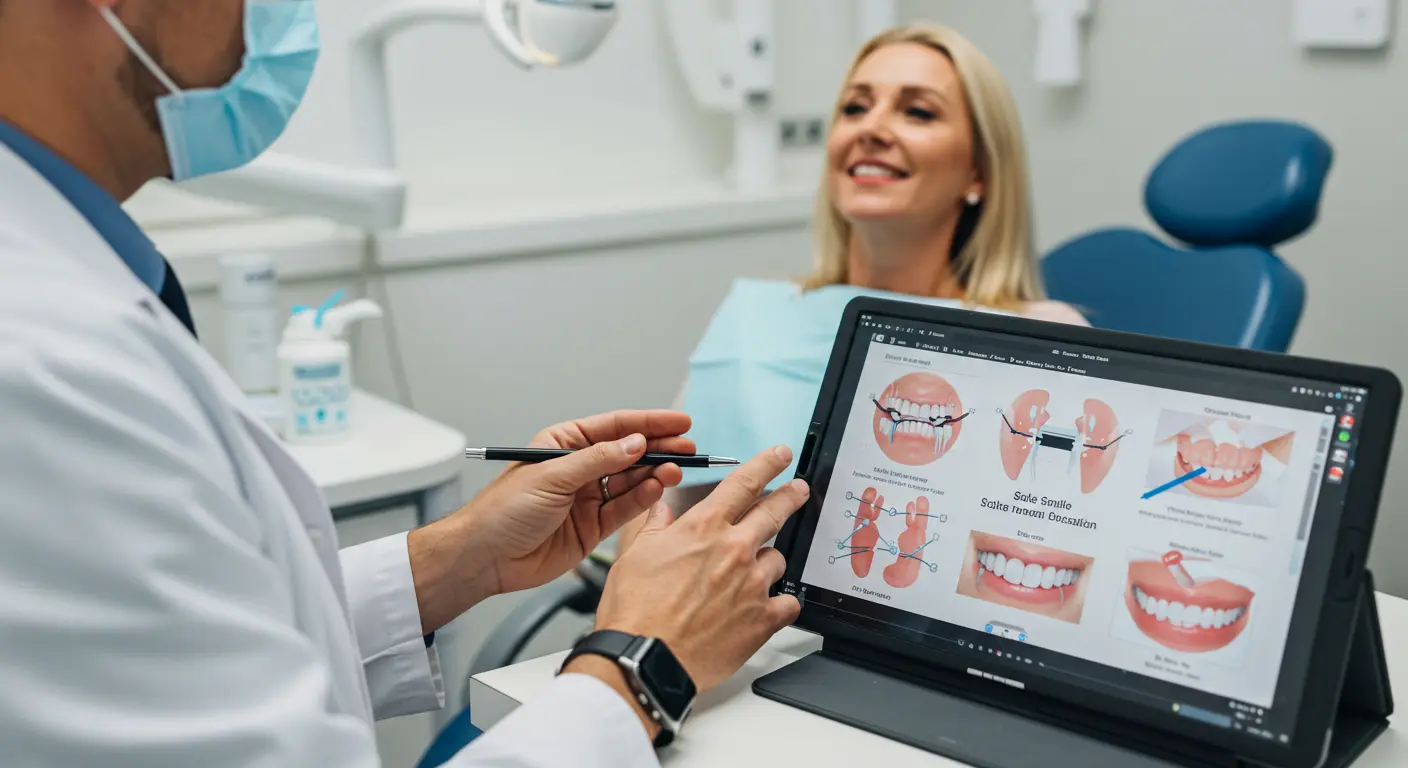
The Step-by-Step Process of Socket Preservation After Tooth Extraction
A successful socket preservation procedure requires meticulous planning and execution. The process generally involves the following steps:
1. Initial Assessment and Consultation
During the initial consultation, the dentist performs a thorough evaluation of the patient’s oral health, including:
- Digital Imaging: High-resolution digital X-rays and 3D scans assess the condition of the bone and surrounding tissues.
- Medical and Dental History: Understanding the patient’s overall health, including conditions like osteoporosis or diabetes, which can affect healing.
- Treatment Planning: The dentist discusses the procedure, expected outcomes, and any potential risks with the patient. This consultation is critical for tailoring a custom treatment plan for each individual.
2. Tooth Extraction
The first step in the procedure is the removal of the problematic tooth. The extraction is performed with minimal trauma to the surrounding tissues. In cases where the tooth is severely decayed or damaged, careful extraction techniques ensure that the socket remains as intact as possible.
3. Socket Cleaning and Preparation
Once the tooth is extracted, the socket is thoroughly cleaned to remove any debris, infection, or remaining tissue fragments. This step is crucial to create a sterile environment that promotes bone regeneration.
4. Graft Material Placement
Depending on the patient’s needs and the condition of the socket, the dentist will select the appropriate graft material—whether an autograft, allograft, xenograft, or synthetic substitute. The graft material is then carefully placed into the socket:
- Filling the Socket: The material is packed into the socket to fill any voids and support the surrounding bone structure.
- Sealing the Socket: In some cases, a resorbable membrane is used to cover the socket, preventing soft tissue ingrowth and allowing for bone regeneration.
5. Suturing and Stabilization
After the graft material is placed, the area is sutured to secure the graft in position. The sutures help stabilize the graft and ensure that it remains in place during the initial healing phase.
6. Post-Operative Care and Follow-Up
Post-operative care is critical to the success of the socket preservation procedure. Patients are given detailed instructions on:
- Oral Hygiene: Gentle brushing and the use of antiseptic mouth rinses to maintain cleanliness around the surgical site.
- Dietary Restrictions: Avoiding hard, crunchy, or sticky foods that could disrupt the graft.
- Medication Protocol: Prescriptions for pain management and antibiotics to prevent infection.
- Follow-Up Appointments: Regular check-ups are scheduled to monitor healing and ensure successful graft integration.
Benefits of Socket Preservation After Tooth Extraction
Implementing socket preservation after tooth extraction offers numerous benefits that extend far beyond simply maintaining bone structure. These benefits include:
A. Enhanced Aesthetic Outcomes
Preserving the alveolar ridge ensures that the contours of the face and smile remain natural. This is particularly important for patients planning future implant procedures, as a well-preserved socket provides an ideal foundation for restorations.
B. Improved Implant Success
By maintaining bone volume and quality, socket preservation significantly increases the success rate of dental implants. The grafted bone supports the implant, ensuring proper osseointegration and long-term stability.
C. Reduced Need for Additional Procedures
Preventing bone loss through socket preservation can eliminate the need for additional procedures like bone grafting later on. This reduces overall treatment time, cost, and patient discomfort.
D. Faster Healing Times
Minimally invasive socket preservation techniques have been shown to reduce healing times, allowing patients to resume normal activities more quickly and with less post-operative pain.
E. Cost Efficiency
By minimizing the need for additional surgeries and extensive restorative procedures, socket preservation can be a cost-effective solution for long-term dental health. This is particularly beneficial for patients who may otherwise face higher costs due to extensive bone loss.

Socket Preservation vs. No Preservation
| Aspect | Socket Preservation | No Preservation |
|---|---|---|
| Bone Volume Maintenance | Maintains alveolar ridge, ideal for implants | Significant bone loss over time |
| Aesthetic Outcome | Natural contours preserved; better smile aesthetics | Flat, less defined gum line; compromised aesthetics |
| Implant Success Rate | Higher due to optimal bone support | Lower due to insufficient bone volume |
| Need for Additional Procedures | Reduced need for bone grafts | Often requires additional grafting procedures |
| Healing Time | Faster recovery with minimally invasive techniques | Longer healing and more complications |
This table clearly demonstrates that socket preservation after tooth extraction provides superior outcomes compared to leaving the extraction site unpreserved.
Clinical Case Studies and Success Stories
Case Study 1: Aesthetic Restoration in a Young Adult
A 28-year-old patient had a severely decayed front tooth extracted. Using digital imaging and socket preservation techniques, a synthetic bone graft was placed immediately. Six months later, the patient received a dental implant with a porcelain crown, resulting in a natural, aesthetically pleasing restoration. The preserved alveolar ridge contributed to a harmonious smile and avoided the need for further grafting procedures.
Case Study 2: Implant Foundation in a Middle-Aged Patient
A 45-year-old patient required tooth extraction due to advanced periodontal disease. The socket was preserved using a combination of xenograft material and a resorbable membrane. Follow-up appointments showed excellent bone regeneration, and the patient later received a fixed bridge supported by dental implants. The procedure not only restored function but also significantly enhanced the patient’s confidence and quality of life.
Best Practices for Successful Socket Preservation
Pre-Operative Planning and Evaluation
A successful socket preservation procedure begins with comprehensive evaluation:
- Medical and Dental History: Thorough review to identify potential risk factors.
- Digital Imaging: 3D scans and digital X-rays help assess bone quality and plan the grafting procedure.
- Patient Consultation: Clear communication about the procedure, benefits, risks, and expected outcomes.
Intra-Operative Techniques
The procedure itself should be performed with precision:
- Atraumatic Extraction: Using minimally invasive techniques to preserve as much of the socket as possible.
- Proper Graft Material Selection: Choosing between autografts, allografts, xenografts, or synthetic bone substitutes based on the patient’s needs.
- Membrane Placement: Using a resorbable membrane to protect the graft and encourage bone regeneration.
Post-Operative Care
Effective post-operative care is critical to ensure the success of the socket preservation:
- Medication Adherence: Following prescribed antibiotic and pain management protocols.
- Oral Hygiene: Gentle cleaning with soft-bristled brushes and antiseptic mouth rinses to prevent infection.
- Dietary Guidance: Avoiding hard or sticky foods during the initial healing period.
- Regular Follow-Ups: Monitoring the healing process and addressing any complications promptly.

Future Trends in Socket Preservation
Emerging technologies and materials are continuously improving socket preservation outcomes. Future trends include:
- Smart Biomaterials: Development of bioactive graft materials that release growth factors to stimulate bone regeneration.
- 3D Printing: Custom 3D-printed scaffolds that match the exact dimensions of the extraction socket, providing superior support for new bone growth.
- Enhanced Digital Workflow: Integration of AI and advanced imaging technologies to predict and optimize the grafting process.
- Combination Therapies: The use of platelet-rich plasma (PRP) and stem cell therapies in conjunction with graft materials to accelerate healing and improve outcomes.
The Role of Patient Experience and Education
A successful socket preservation procedure also depends on the patient’s understanding and involvement. Educating patients about the benefits and proper care techniques is essential:
- Pre-Procedure Education: Informing patients about the importance of preserving the socket and the steps involved.
- Post-Operative Instructions: Providing detailed care guidelines to ensure optimal healing.
- Ongoing Support: Scheduling regular follow-up appointments to monitor progress and adjust treatment as necessary.
Comparative Case Studies: Long-Term Outcomes
| Case Study | Procedure Used | Outcome | Patient Satisfaction |
|---|---|---|---|
| Aesthetic Restoration (28 y/o) | Synthetic bone graft with immediate socket preservation | Natural, harmonious smile; no additional graft needed | 95% satisfaction |
| Implant Foundation (45 y/o) | Xenograft + resorbable membrane socket preservation | Excellent bone regeneration; successful implant-supported bridge | 90% satisfaction |
These case studies demonstrate that patients who undergo socket preservation after tooth extraction experience higher success rates, better aesthetic outcomes, and improved overall satisfaction compared to traditional extraction procedures without grafting.
Conclusion
Socket preservation after tooth extraction is a vital procedure that ensures the maintenance of bone volume and enhances the success of future restorative treatments such as dental implants. This minimally invasive approach not only preserves the natural contours of the alveolar ridge but also significantly improves aesthetic outcomes and reduces the need for additional procedures. With advanced digital planning, innovative graft materials, and meticulous post-operative care, socket preservation offers a reliable and cost-effective solution for maintaining oral health after tooth extraction.
For patients seeking long-term dental stability and aesthetic excellence, especially when planning for future implants, embracing modern socket preservation techniques is a crucial step. The integration of cutting-edge technology, patient-specific treatment plans, and a comprehensive approach to care ensures that your smile remains strong, functional, and beautiful for years to come.
Are you ready to invest in your long-term oral health? Contact Smile Design NJ in Westfield, NJ, today to schedule your consultation and learn more about our advanced socket preservation procedures. Let our expert team guide you through a personalized treatment plan that safeguards your smile and enhances your overall quality of life. Your journey to a lasting, radiant smile begins now!


